
Social Proof to Skyrocket Your SaaS Conversions: 8 Steps

by
Wiktoria Slowikowska
Oct 17, 2024
Identify and convert your most valuable users
Sign Up
Introduction
You're at the helm of a growing startup, and you've decided it's time to invest in a project management tool. After hours of research, you've narrowed it down to two options. Both have sleek interfaces, competitive pricing, and the features you need. But there's a catch – one of them showcases glowing testimonials from industry leaders, boasts impressive user statistics, and proudly displays awards from top tech publications. Which one would you choose?
If you're like most of us, you'd gravitate towards the second option. Why? Because it taps into a powerful psychological principle known as social proof. In the vast and often overwhelming world of SaaS, social proof isn't just a fancy marketing term – it's the secret ingredient that can transform curious visitors into loyal customers.
What is Social Proof?
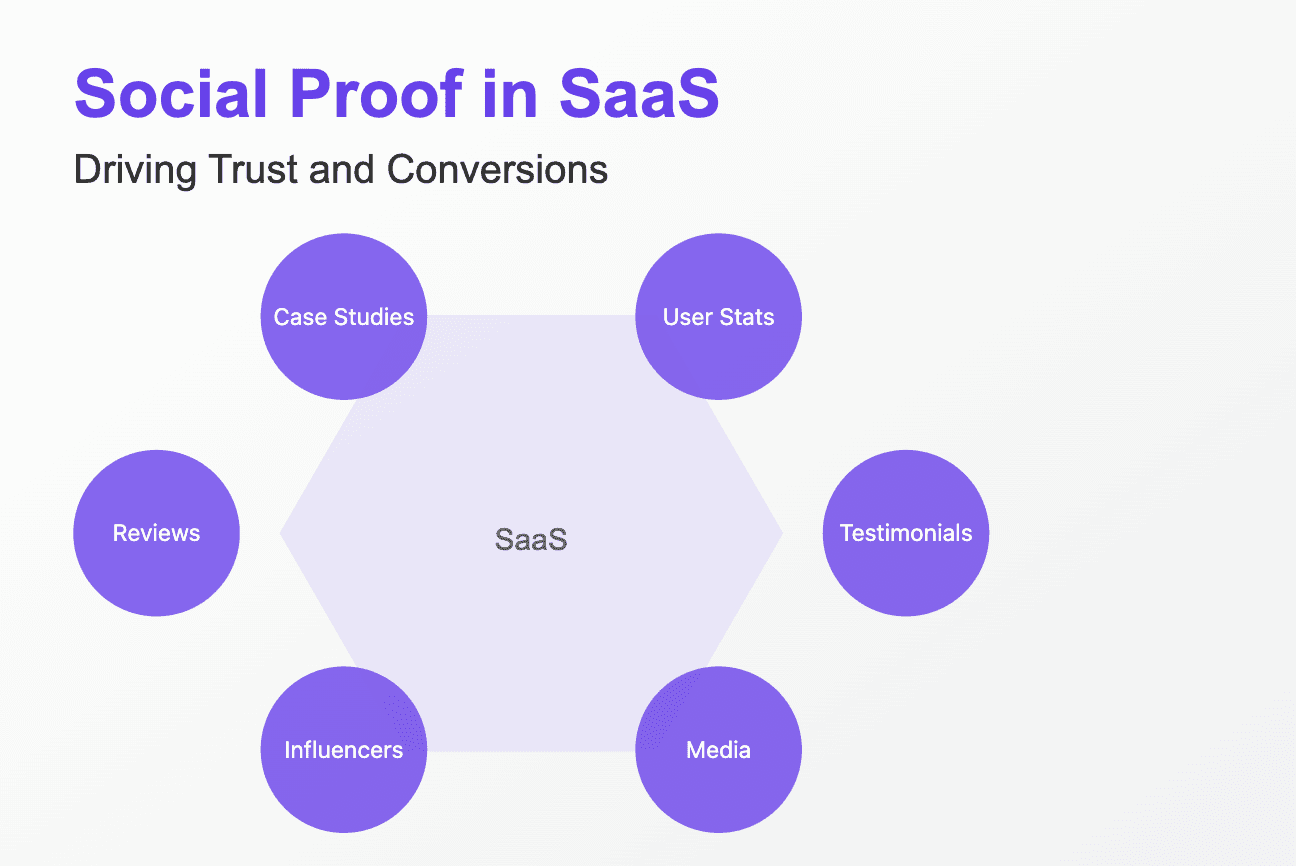
Social proof, a concept popularized by psychologist Robert Cialdini, is our tendency to look to others for cues on how to behave in uncertain situations. In the digital age, and particularly in the SaaS industry, it's become a critical factor in decision-making.
But why does social proof pack such a punch in the SaaS world? There are several key reasons:
Intangibility: Unlike physical products, SaaS offerings can't be touched or tested in traditional ways. Social proof bridges this gap by providing tangible evidence of value.
Commitment: Choosing a SaaS solution often requires significant time and resource investment. Social proof helps mitigate the perceived risk associated with this commitment.
Rapid Evolution: The SaaS landscape changes quickly. Social proof helps potential customers navigate this terrain by highlighting proven solutions.
Crowded Marketplace: With low barriers to entry, the SaaS market is saturated. Social proof helps your offering stand out among alternatives.
Consider the last time you were choosing between two similar SaaS products. Did you find yourself scrolling through user reviews, looking for familiar company logos, or checking out their social media presence? That's social proof in action, subtly influencing your decision-making process.
Now that we understand why social proof is so crucial in the SaaS world, let's dive into how you can leverage it to boost your conversions. We'll explore seven powerful strategies, each with its own unique flavor of persuasion.
1. Customer Testimonials
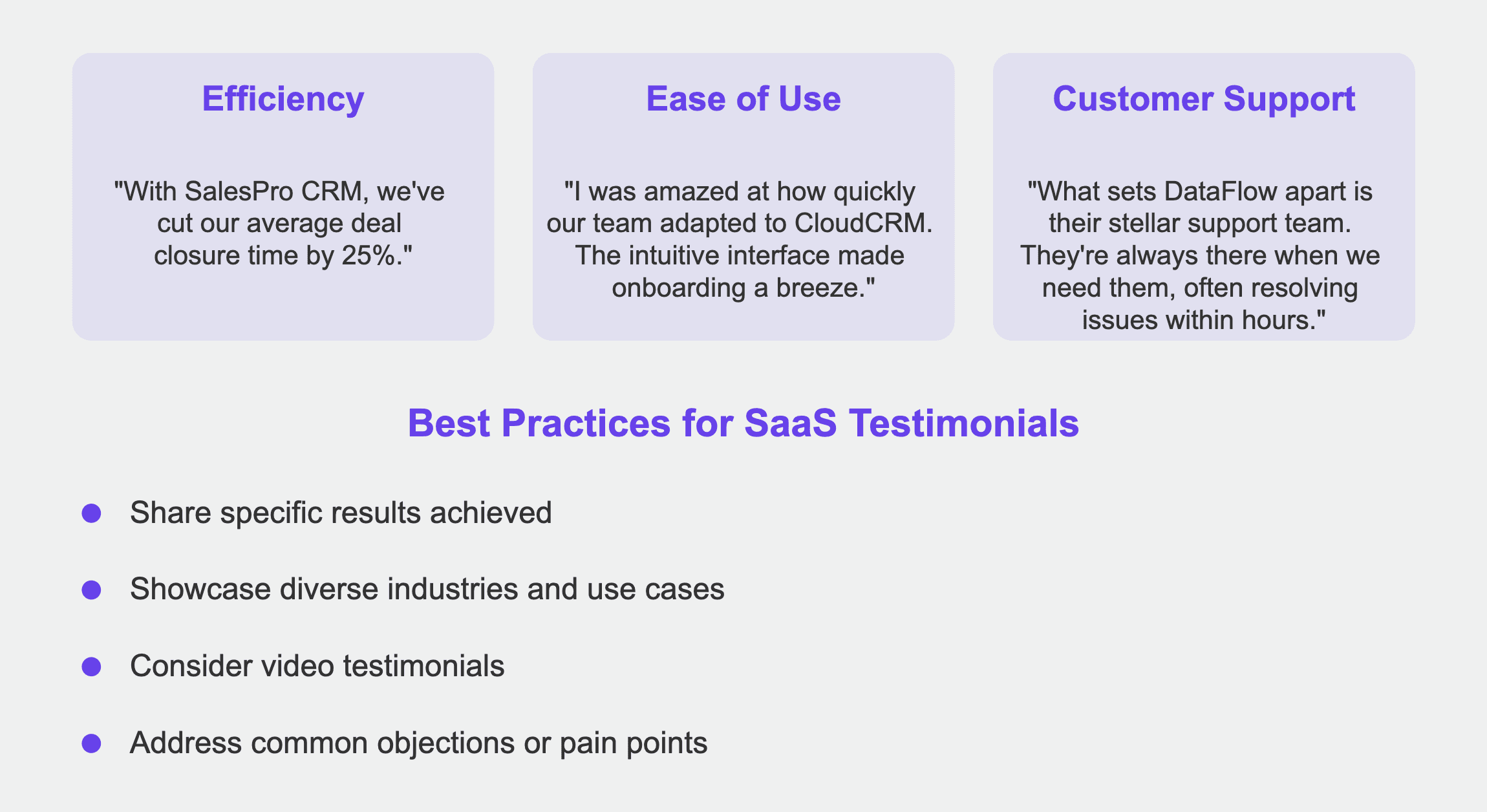
Customer testimonials are the crown jewel of social proof in the SaaS world. They provide authentic, relatable narratives that potential customers can connect with. When it comes to SaaS testimonials, specificity is your best friend. Generic praise might give you a warm fuzzy feeling, but it won't do much to move the needle on conversions.
Here are some best practices for effective SaaS testimonials:
Encourage customers to share specific results they've achieved using your SaaS.
Showcase testimonials from various industries, company sizes, and use cases.
Consider video testimonials for added authenticity and engagement.
Structure testimonials to address common objections or pain points.
For example, imagine stumbling upon a testimonial that says, "Using CloudTrack, we increased our team's productivity by 37% in just three months." Now that's something that grabs attention and sparks interest!
But don't stop there. Let's say you're selling a customer relationship management (CRM) SaaS. You could showcase testimonials that speak to different aspects of your product:
Efficiency: "With SalesPro CRM, we've cut our average deal closure time by 25%."
Ease of Use: "I was amazed at how quickly our team adapted to CloudCRM. The intuitive interface made onboarding a breeze."
Customer Support: "What sets DataFlow apart is their stellar support team. They're always there when we need them, often resolving issues within hours."
By presenting a diverse range of testimonials, you're more likely to resonate with a wider audience and address various concerns potential customers might have.
2. User Statistics

In the SaaS world, impressive user statistics can be a powerful form of social proof. They provide quantitative evidence of your solution's popularity and effectiveness. Imagine landing on a SaaS homepage and seeing "Trusted by over 100,000 businesses worldwide" prominently displayed. Immediately, you'd think, "Wow, if that many businesses are using it, it must be doing something right!"
Effective use of user statistics can include:
Total User Base: "Trusted by over 100,000 businesses worldwide"
User Growth: "Join the 10,000 new teams that signed up this month"
Usage Metrics: "Over 1 million projects managed on our platform"
Performance Indicators: "Our users report an average 30% increase in team productivity"
The key with statistics is to keep them current and contextual. Regularly update your numbers to reflect your growth, and don't just throw out figures without explanation. Help your potential customers understand what these numbers mean for them.
For instance, instead of just saying "1 million users," you could say "Empowering 1 million professionals to work smarter." This not only provides a statistic but also conveys the benefit of your SaaS.
Consider creating an infographic or dynamic counter on your website to display these statistics in an engaging way. A real-time counter showing the number of tasks completed or documents processed using your SaaS can be particularly impressive.
3. Client Logos

In the B2B SaaS space, showcasing logos of well-known clients can significantly boost your credibility. It's a subtle way of saying, "If these industry leaders trust us, you can too." However, it's crucial to approach this strategy with care and consideration.
Best practices for using client logos include:
Always get explicit permission before using a client's logo.
Prioritize logos that will resonate with your target audience.
Focus on quality over quantity – a few high-profile, relevant logos are more impactful than a sea of unknown brands.
Consider creating a dedicated section on your website for case studies, each prominently featuring the client's logo. This not only showcases your impressive client list but also provides in-depth information about how your SaaS has benefited these companies.
For example, if you're selling a project management SaaS, you might have a "Trusted By" section featuring logos of well-known tech companies, followed by brief success stories:
"Tech Giant X streamlined their product development process, reducing time-to-market by 20%."
"Startup Y managed to scale their operations smoothly, handling 3x more projects without increasing headcount."
This approach combines the power of recognizable logos with specific, quantifiable results, creating a potent form of social proof.
4. Social Media Proof
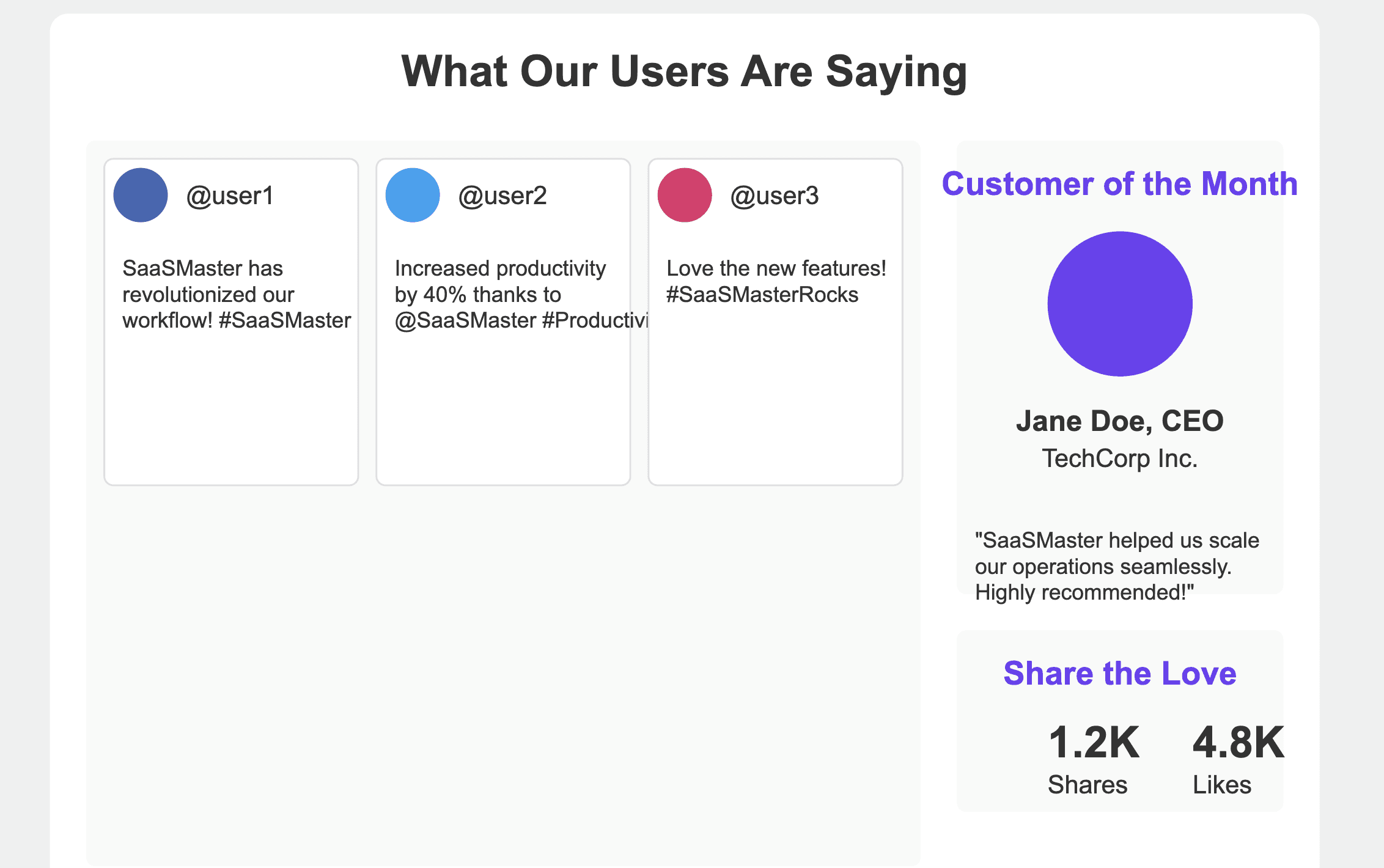
In our hyper-connected world, social media can be a goldmine of social proof for SaaS companies. It provides a platform for real-time endorsements and discussions about your product.
Strategies for leveraging social media proof include:
Encouraging and showcasing user-generated content from satisfied customers.
Displaying social share counts for your content or product pages.
Highlighting positive reviews from social media platforms.
Creating a branded hashtag for users to share their experiences.
Remember to engage actively with your social media audience. Respond to comments and reviews, both positive and negative. This shows that you value customer feedback and are committed to continuous improvement.
Consider creating a social media wall on your website, showcasing real-time posts from happy customers. Tools like Walls.io or Senja.io can help you curate and display social media content effectively.
You could also leverage social media for customer spotlights. For instance, you could have a "Customer of the Month" feature where you highlight a customer's success story across your social media channels and website. This not only provides social proof but also gives your customers additional exposure, incentivizing them to participate.
5. Awards and Certifications
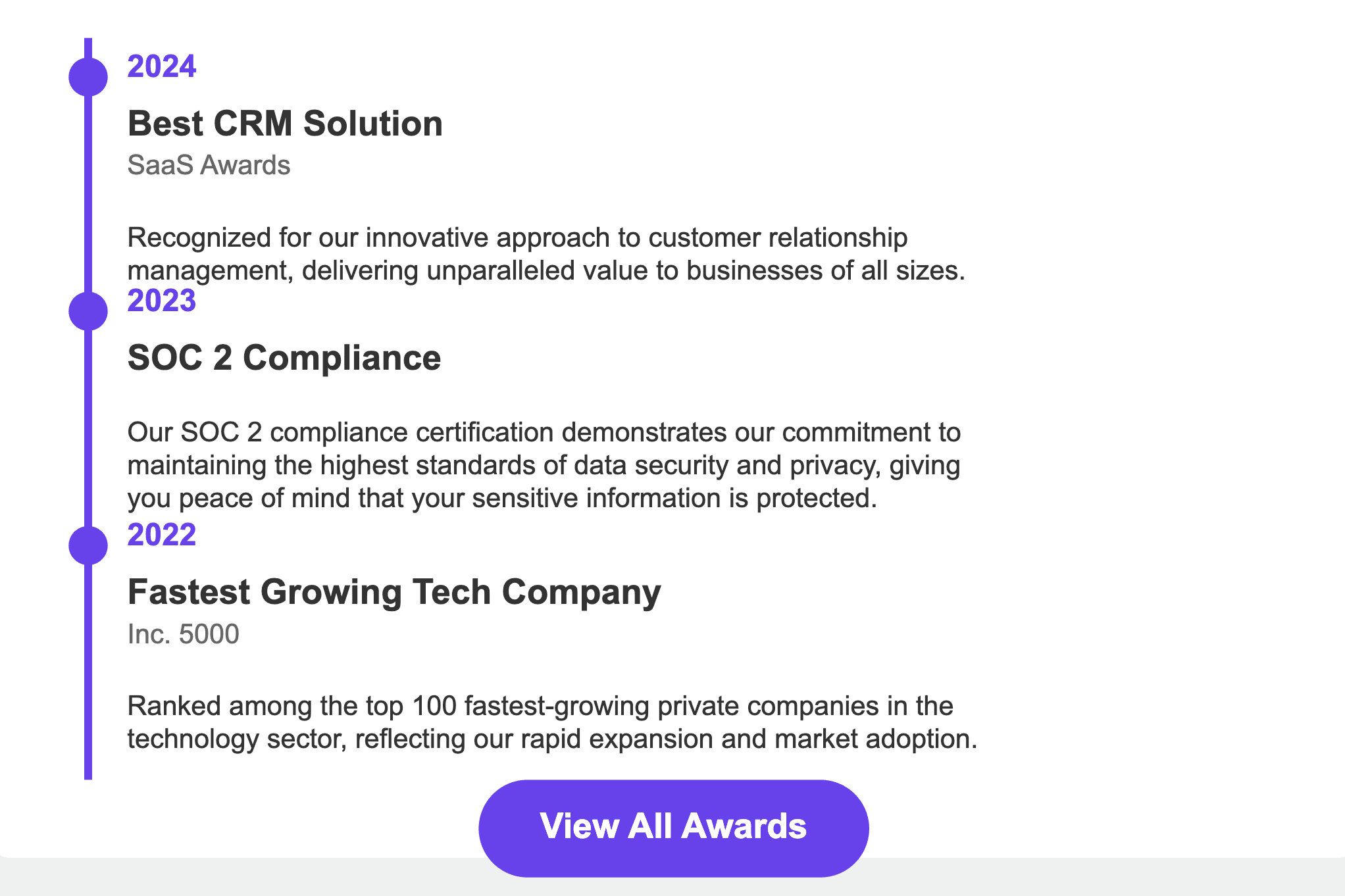
Industry awards and certifications serve as powerful third-party endorsements of your SaaS offering. They provide an extra layer of credibility and can be particularly effective in competitive markets.
Types of awards and certifications to showcase might include:
Industry-specific awards (e.g., "Best CRM Solution" at the SaaS Awards)
General business awards (e.g., "Fastest Growing Tech Company" by Inc. 5000)
Security certifications (e.g., SOC 2 Compliance, ISO 27001)
Integration certifications (e.g., "Salesforce Certified App")
Environmental or social responsibility certifications (e.g., B Corp Certification)
When displaying awards and certifications, prioritize recent accolades over older ones. Also, don't assume your audience knows what each award or certification means – provide context to help them understand the significance.
For example, if you've received SOC 2 compliance, you might explain it like this: "Our SOC 2 compliance certification demonstrates our commitment to maintaining the highest standards of data security and privacy, giving you peace of mind that your sensitive information is protected."
Consider creating a dedicated "Awards and Recognitions" page on your website. This page could feature a timeline of your company's achievements, with each award or certification accompanied by a brief explanation of its significance and how it benefits your customers.
6. Expert Endorsements
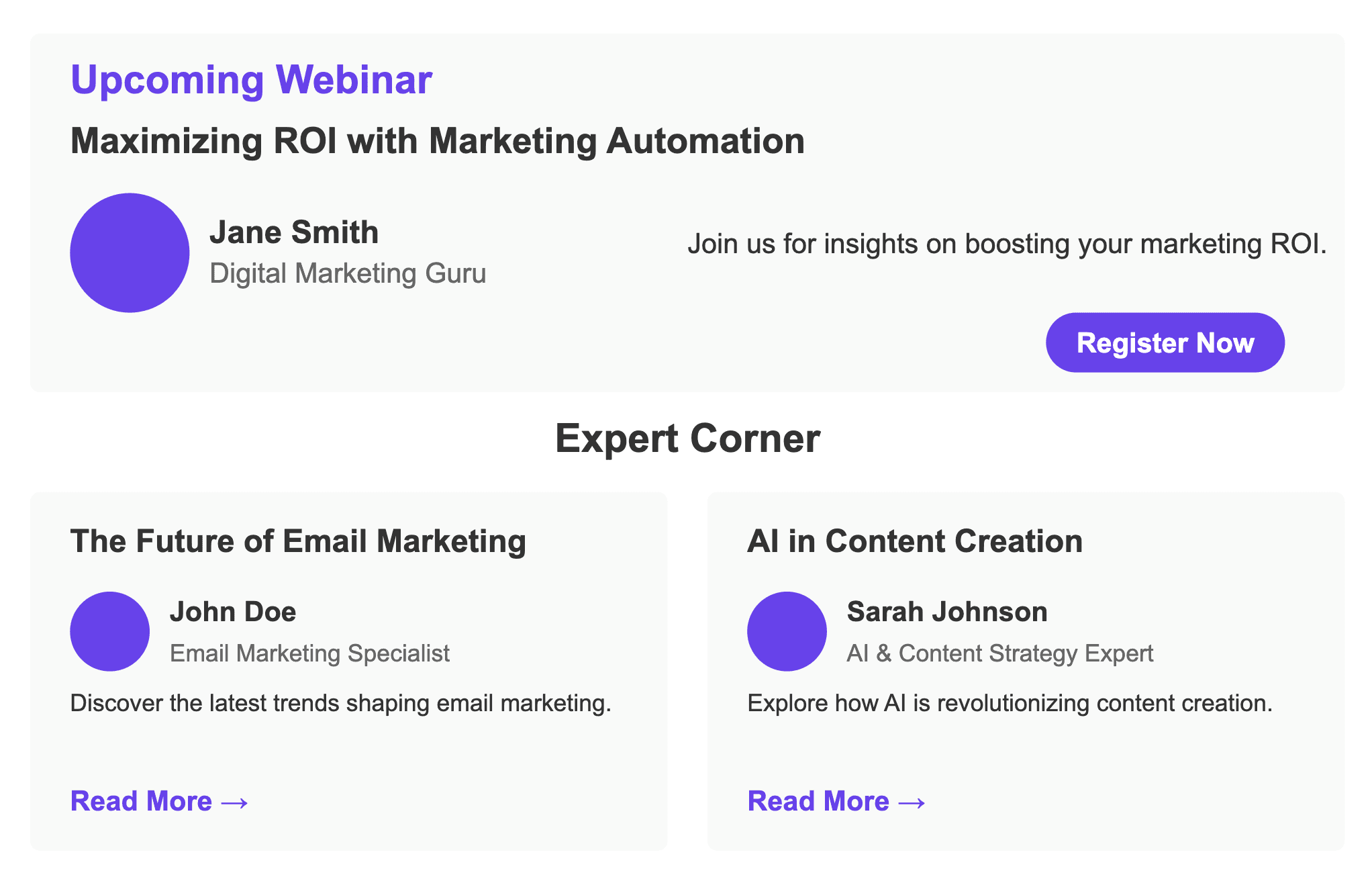
In the SaaS world, an endorsement from a recognized industry expert can significantly influence potential customers. It's like having a respected figure vouching for your product's value and effectiveness.
Consider these strategies for securing and showcasing expert endorsements:
Invite industry experts to contribute guest blog posts on your website.
Host webinars or podcasts featuring thought leaders in your industry.
If you have industry leaders on your advisory board, showcase this prominently.
Collaborate with influencers for product reviews or demonstrations.
Remember, relevance is key when it comes to expert endorsements. Ensure the expert's domain aligns closely with your SaaS offering. And always focus on providing value to your audience, not just promoting your SaaS.
For instance, if you're selling a marketing automation SaaS, you might collaborate with a well-known digital marketing expert for a webinar on "Maximizing ROI with Marketing Automation." This not only provides valuable content for your audience but also associates your brand with a respected industry figure.
You could also create an "Expert Corner" on your blog where industry leaders regularly contribute articles related to your SaaS's domain. This positions your platform as a valuable resource hub, enhancing your credibility in the process.
7. Data-Driven Case Studies

While related to testimonials, in-depth case studies provide a more comprehensive look at how your SaaS solves real-world problems. They offer a deep dive into the challenges faced by a client, how your solution addressed those challenges, and the concrete results achieved.
Elements of an effective SaaS case study include:
A clear articulation of the challenge the client was facing
An explanation of how your SaaS addressed the challenge
Insights into the onboarding and integration process
Concrete data showcasing the impact of your SaaS
Discussion of future plans for leveraging your solution
When creating case studies, aim for diversity in terms of industries, company sizes, and use cases. This helps ensure that a wide range of potential customers can find a story that resonates with their specific situation.
For example, let's say you offer a customer service SaaS. Your case studies could cover:
How a small e-commerce business reduced customer response times by 50% and increased customer satisfaction scores.
How a large B2B company streamlined their support process, handling 30% more tickets without increasing staff.
How a rapidly growing startup used your platform to scale their customer support operations efficiently as they expanded internationally.
Each case study should tell a compelling story, backed by hard data and specific examples. Use visuals like charts or infographics to make the data more digestible and impactful.
Consider creating a case study format that's easy to skim, with key metrics highlighted prominently. You could also offer different formats – a detailed PDF for those who want an in-depth read, and a brief video summary for those who prefer a quick overview.
8. Interactive Demos and Free Trials

While not traditionally considered a form of social proof, interactive demos and free trials can be powerful tools in the SaaS world. They allow potential customers to experience the value of your product firsthand, creating their own "proof" of its effectiveness.
Here are some ways to leverage this approach:
Offer a "freemium" version of your product that allows users to experience core features.
Provide a time-limited free trial with full access to all features.
Create interactive product tours or demos that guide users through key features.
Use chatbots to offer personalized product demonstrations.
The key is to make the onboarding process as smooth as possible. Provide clear guidance, offer quick wins, and showcase the most impressive features of your SaaS during the trial period.
For example, you could create a series of onboarding emails that guide trial users through different features, each email highlighting a success story or statistic related to that feature. This combines the power of user experience with other forms of social proof we've discussed.
Conclusion
As we've explored, social proof can be a powerful tool for boosting conversions in the SaaS world. But remember, it's not just about throwing a bunch of testimonials and statistics on your website. The key is to implement social proof strategically and authentically.
Here are some final tips to keep in mind:
Place social proof elements at key decision points in your user journey.
Keep your social proof fresh and updated.
Ensure all social proof aligns with your brand voice and visual identity.
Use A/B testing to optimize the impact of your social proof elements.
Never use fake testimonials or inflated statistics – authenticity is crucial.
Combine different types of social proof for maximum impact.
Tailor your social proof to different stages of the buyer's journey.
By leveraging these strategies effectively, you can build trust, overcome objections, and ultimately boost conversions for your SaaS offering. Remember, in the digital world, social proof isn't just nice to have – it's a necessity for success.
In the end, the goal of social proof is to tell a compelling story about your SaaS – a story of success, reliability, and value. By weaving together testimonials, statistics, case studies, and expert endorsements, you create a narrative that resonates with potential customers and guides them towards conversion.
So, take a critical look at your current use of social proof. Are you leveraging all these strategies? Is your social proof prominently displayed and consistently updated? By fine-tuning your approach to social proof, you can significantly enhance the persuasive power of your SaaS marketing efforts.
Remember, in the world of SaaS, trust is your most valuable currency. And social proof? It's your most effective way of earning that trust.




